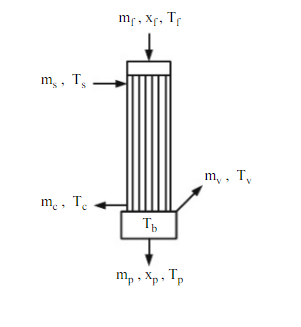Food Engineering
Homework Help & Tutoring
We offer an array of different online Food Engineering tutors, all of whom are advanced in their fields and highly qualified to instruct you.
Food Engineering
Food engineering is a recently developed engineering division with particular interests in the commercialization of food products and services. Food engineering is a multi-disciplinary field of applied physical sciences which works to combine the knowledge of science, microbiology, and engineering for cost-efficient and effective processing of food. The subject is not only concerned with the direct development of food items and related products; other related activities such as research and design of food engineering machinery, developing packaging materials and machinery, and instrumentation and control systems are all part of food engineering. Other concerns of food engineering are the environmental friendliness of machinery and food engineering processes. Food engineers apply the principles of physics, chemistry, mathematics and basic engineering in preparing waste treatment and other environmentally friendly technologies in food processing.
Advanced technologies of food engineering, employing the principles of nano-technology and other modern developments in microbiology, are also involved in developing new food products and processes. Transportation without spoilage is also one of the major challenges food engineers address. Advanced materials and material technology principles are being employed by food engineering scientists in developing durable food containers and other packaging materials of food and related products.
Novel food processing techniques - e.g. dehydration, membrane usage, electronic controlled thermal processing, auto extrusion - are all results of food engineering technology developments. All of these versatile technologies are being studied by food engineering researchers to enhance their applicability and optimize them for better results. At the graduate level, food engineering students study the bio-chemical characteristics of food items, microbiological reactions and manipulation of them for food processing requirements. Food additives, the effects of additives on characteristics of foods, and shelf life are also studied at the graduate level. Energy utilization in food processing and thermal properties of food items also form an important part of study.
Pickling, concentration enhancement, sterilization, pasteurization, and fermentation are essential topics in food engineering wherein graduates work to gain sufficient theoretical and practical expertise. Canning of food items for fruits, vegetables, meats, poultry and marine products is studied as a special course in food engineering due to increased significance of packaging in the food industry.
Knowing the basics of food rheology, fluid and flow properties of food are important characteristics for food processing and hence are studied in depth in food engineering programs. Special consideration is also given to the usage of steam, heat transfer mechanisms, psychometrics, and heat and mass balance. Research areas also include safe use of chemicals in agriculture, efficient bio-refineries, and process optimization etc. Food engineers are finding careers in global food industries as well as alcoholic and non-alcoholic beverage industries.
JFE, IJFE and FE are some of the several online resources offering valuable information on the latest developments in food engineering programs. AAMP and AFFI are two professional associations offering speciality professional membership programs and information support on chosen specific domains of food engineering.
Food Engineering sample problems
Food engineers need to be able to estimate process parameters and design food engineering equipment in accordance with best practice principles. This selection of sample problems provides some insight into the typical challenges food engineers face.
Pasteurization and Sterilization
- For certain a thermophilic spore substance in milk, the decimal reduction time (D) at 121 degrees Celsius is found to be 30 seconds, and the value of z is 10.5 degrees Celsius. What will the decimal reduction time of the same substance at temperature of 150 degrees Celsius?
- Determine the required heating time F121 for the above material for a 9 log cycle population reduction?
- DT1 = DT2* 10(T2-T1)/Z = 30 *(10(121-150)/10.5) = 0.0519s
- The heating time for a certain population reduction FT is given by the formula DT logNo/N, where DT is the decimal reduction time of the substance at the given temperature T, and logNo/N accounts for the number of log cycle population reductions.
In the current scenario, D121 is 30 seconds and LogNo/N = 9, so the required heating time F121 will be 30 * 9 = 270 seconds, or 4.5 minutes. Hence the sterilization time for this process is 4.5 minutes.
Principles of evaporation and the design of an evaporator
A single effect evaporator is used to evaporate and thereby enhance the concentration of a certain fruit juice from 18% of solid content to 23% solid content. Consider the mass flow rate of the juice as 3kg/s. Can you:
- Determine the product flow rate for the substance
- Determine the evaporation rate
- Determine the steam consumption
- Determine the steam economy
- Determine the required heat transfer area of the evaporator
Assume that the juice enters the evaporator at 50 degrees Celsius (saturated steam at 100 degrees Celsius is used as heating medium, and the condensate exists at 100 degrees Celsius. Consider the heat capacity rate of the fruit juice as 3.7kg/kg-oC and 3.6 KJ/kg-oC at the inlet and outlet of the evaporator respectively. The overall heat transfer coefficient of the evaporator is 1500 W/m2-oC.
As the evaporator is a single effect evaporator, the mass flow happens due to the force of gravity alone and is shown in the following figure:
- Mf is the initial flow rate of the fruit juice and is 3kg/s, considering the case of initial concentration of 18% and the final concentration of 23% the final flow rate of the fruit juice can be calculated using the principles of the mass balance:
Mf * 0.18 = mp * 0.23, and so mp = 3 * 0.18/0.23 = 2.348 kg/s
- Also using the same principles of mass balance the quantity of the substance being evaporated can be calculated. Assume that the flow rate of the substance at the entrance is 3kg/s and the final flow rate of the substance is 348 kg/s, the balance of the mass should go as evaporated substance in line with the principles of the mass balance:
Mf = mp + mv where mv is the mass of the substance vaporized from the evaporator.
Hence mv = 3 - 2.348 = 0.652 kg/s - Steam consumed in the process can be calculated using the principles of the heat balance through enthalpy determination and some subsequent calculation. The guiding heat balance equation for the problem is:
MfHf + msHs = mpHp + mcHc +mvHv
Mf, ms,mp, mc, mv are the mass flow rates of the fruit juice at the entrance to the evaporator, steam flow rate, exit juice flow rate, condensate steam flow rates and the vapor flow rate from the evaporator – corresponding H values are the enthalpy values of the fluid. - The amount of steam entering into vapor is same as amount of condensate leaving the condenser.
MpHp + mcHc – mfHf = msHs –mcHc = msβ, where β is the latent heat of condensation of steam at the operating temperature. From the above equation the mass flow rate of the steam can be calculated as
ms = ( mpHp + mcHc – mfHf)/β = 0.690 kg/s - Steam economy is the ratio of water evaporated from the juice to the actual amount of steam entering into the evaporator. In the current problem it is 652/0.690 = 0.945 kg of water evaporated per kg of steam entering into the evaporator.
- For heat transfer area calculations in this evaporator, the actual amount of heat being transferred to be equated to the overall heat transfer through the evaporator Q = ms β = A*U *(Ts – Tb) where Ts is the temperature of the steam, Tb is the temperature of the boiling temperature of the juice. A is the surface area of the evaporator and U is the overall heat transfer coefficient, β is the latent heat of evaporation of the water. Hence, in the current case, A - the surface area of the evaporator - can be calculated as A = ms β/U *(Ts – Tb) = 20.8 square metres.
References
Valentas, K.J., Rotstein, E. and Singh, R.P., 1997. Handbook of food engineering practice. CRC Press.
Yanniotis, S., 2007. Solving problems in food engineering. Springer Science & Business Media.
To fulfill our tutoring mission of online education, our college homework help and online tutoring centers are standing by 24/7, ready to assist college students who need homework help with all aspects of food engineering. Our engineering tutors can help with all your projects, large or small, and we challenge you to find better online food engineering tutoring anywhere.
College Food Engineering Homework Help
Since we have tutors in all Food Engineering related topics, we can provide a range of different services. Our online Food Engineering tutors will:
- Provide specific insight for homework assignments.
- Review broad conceptual ideas and chapters.
- Simplify complex topics into digestible pieces of information.
- Answer any Food Engineering related questions.
- Tailor instruction to fit your style of learning.
With these capabilities, our college Food Engineering tutors will give you the tools you need to gain a comprehensive knowledge of Food Engineering you can use in future courses.
24HourAnswers Online Food Engineering Tutors
Our tutors are just as dedicated to your success in class as you are, so they are available around the clock to assist you with questions, homework, exam preparation and any Food Engineering related assignments you need extra help completing.
In addition to gaining access to highly qualified tutors, you'll also strengthen your confidence level in the classroom when you work with us. This newfound confidence will allow you to apply your Food Engineering knowledge in future courses and keep your education progressing smoothly.
Because our college Food Engineering tutors are fully remote, seeking their help is easy. Rather than spend valuable time trying to find a local Food Engineering tutor you can trust, just call on our tutors whenever you need them without any conflicting schedules getting in the way.






